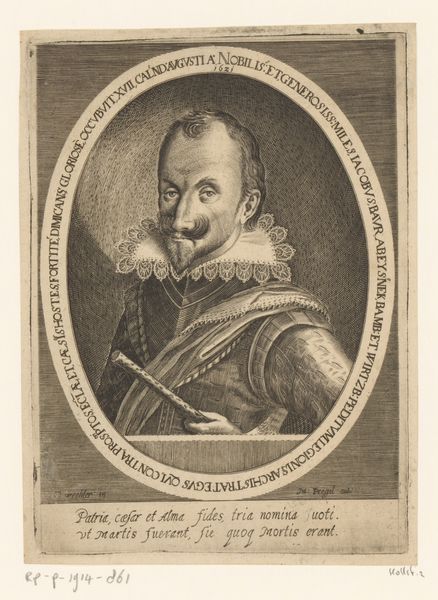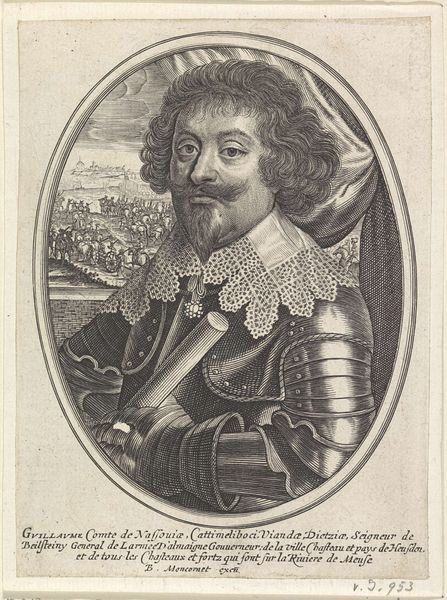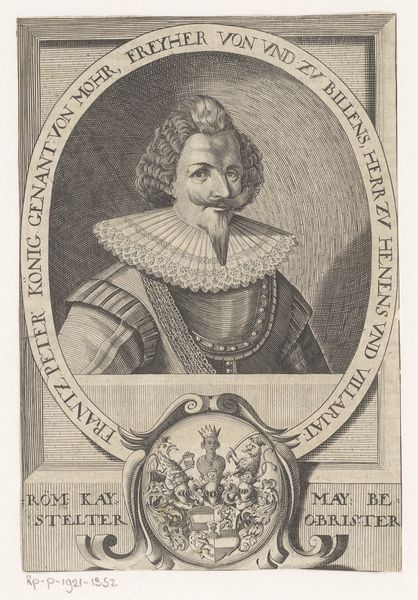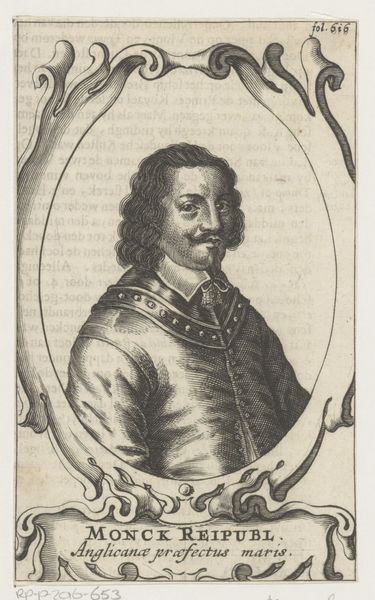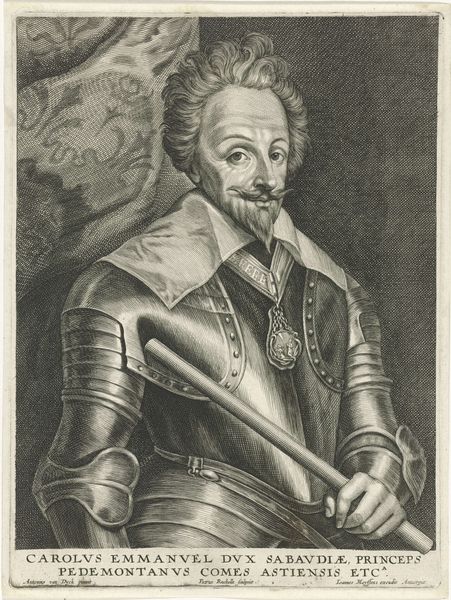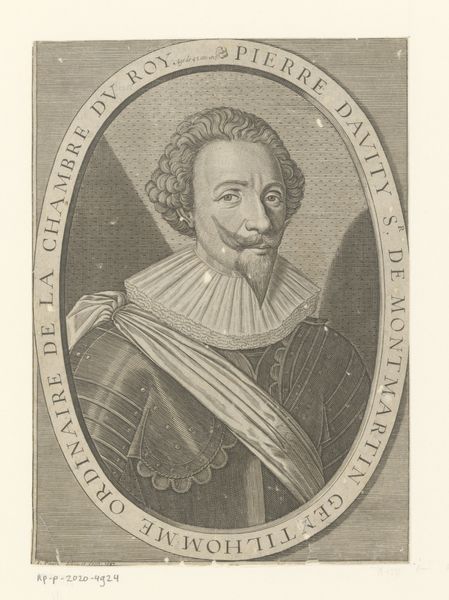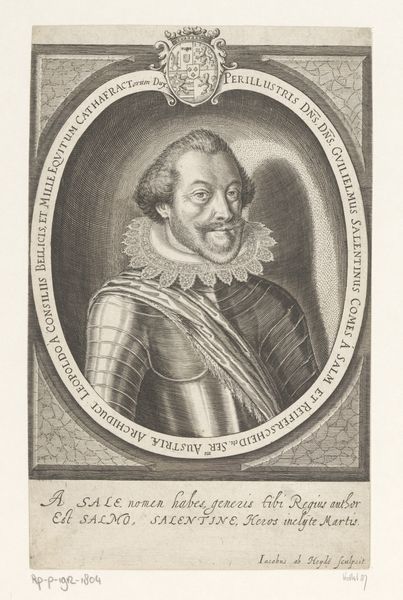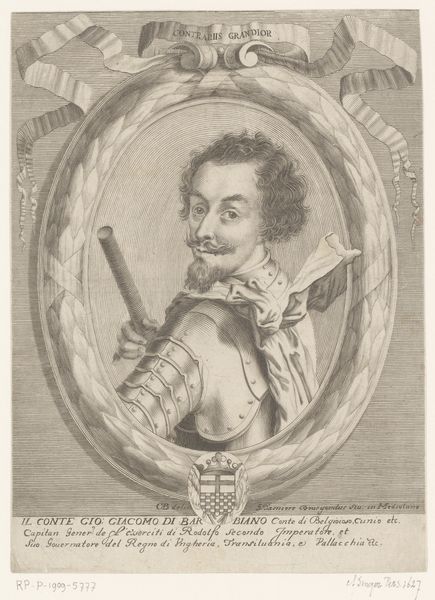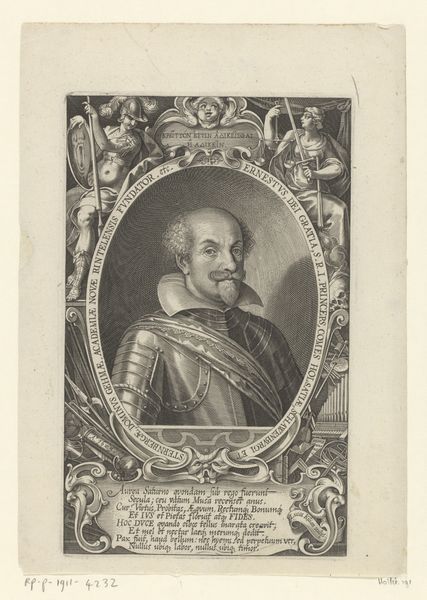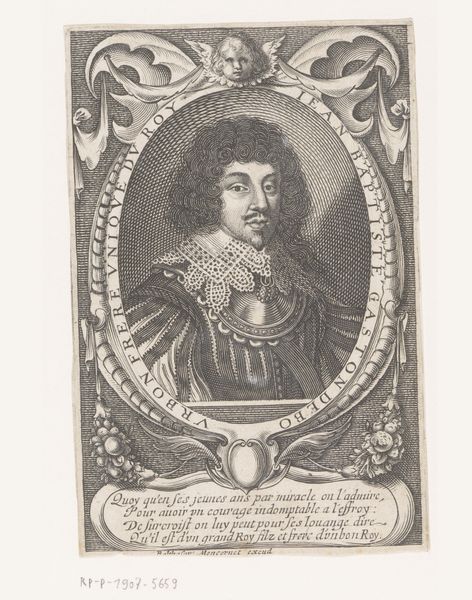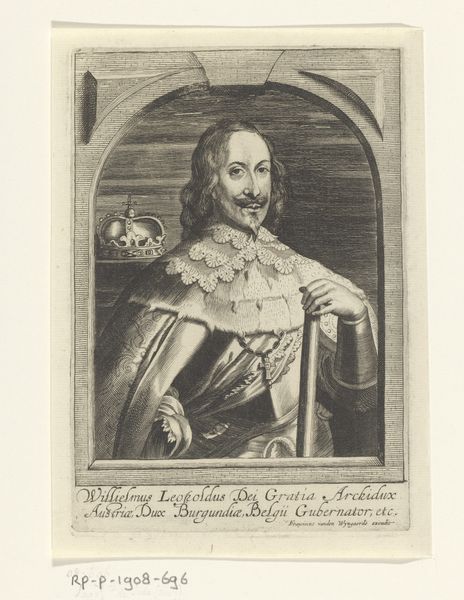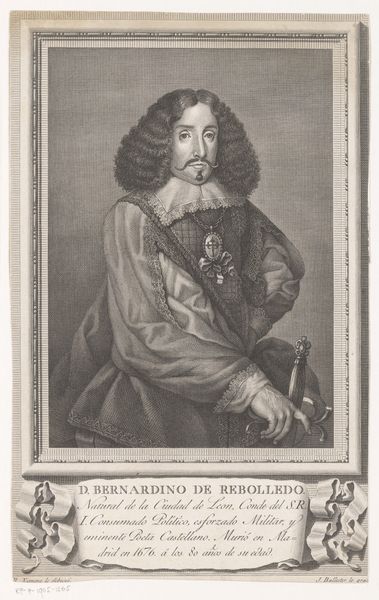
print, engraving
#
portrait
#
baroque
# print
#
old engraving style
#
history-painting
#
engraving
Dimensions: height 183 mm, width 120 mm
Copyright: Rijks Museum: Open Domain
This portrait of Wenzel, Freiherr von Wratislaw, was etched by Wilhelm Schwan in the mid-17th century. The printmaking process begins with a metal plate, likely copper. Schwan would have coated the plate with a waxy, acid-resistant ground, and then used a sharp needle to scratch away the ground, exposing the metal beneath. The plate is then submerged in acid, which bites into the exposed lines, creating grooves. The depth and width of these lines determine the darkness of the printed image. Once the etching is complete, ink is applied to the plate, filling the etched lines. The surface is wiped clean, and the image is transferred to paper under high pressure. The dense network of lines defines the forms, textures, and shading, and gives a sense of the sitter's social standing. The linear precision speaks to the engraver’s skill, yet the multiplication of images erodes the singular status that painting traditionally occupied. Etchings like this made portraits accessible to a wider audience, playing a crucial role in the dissemination of information and status in early modern Europe.
Comments
No comments
Be the first to comment and join the conversation on the ultimate creative platform.
